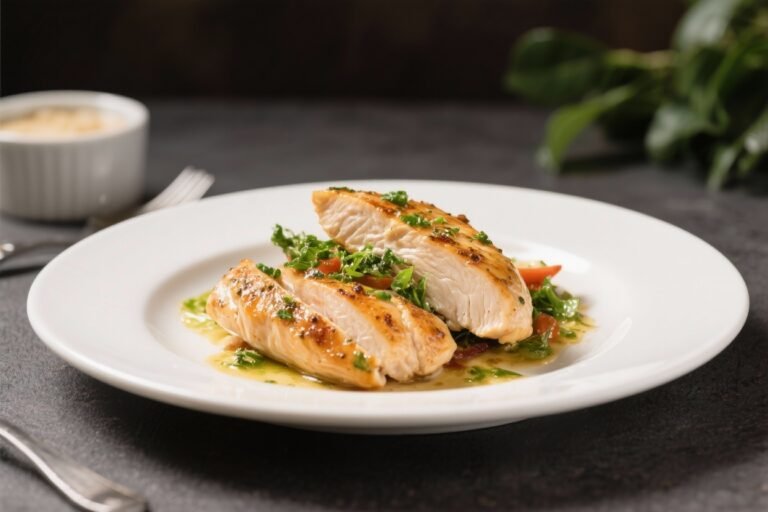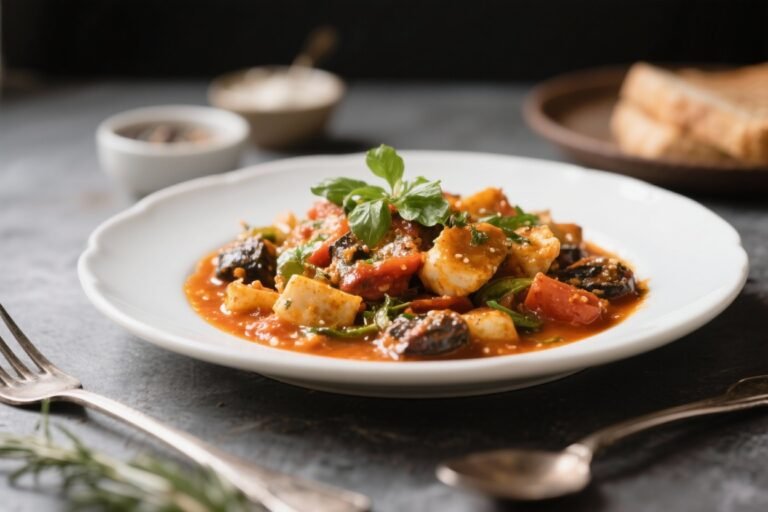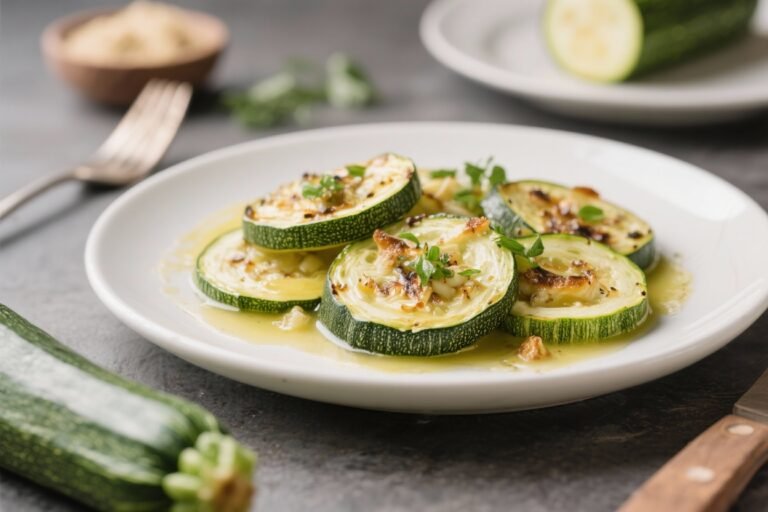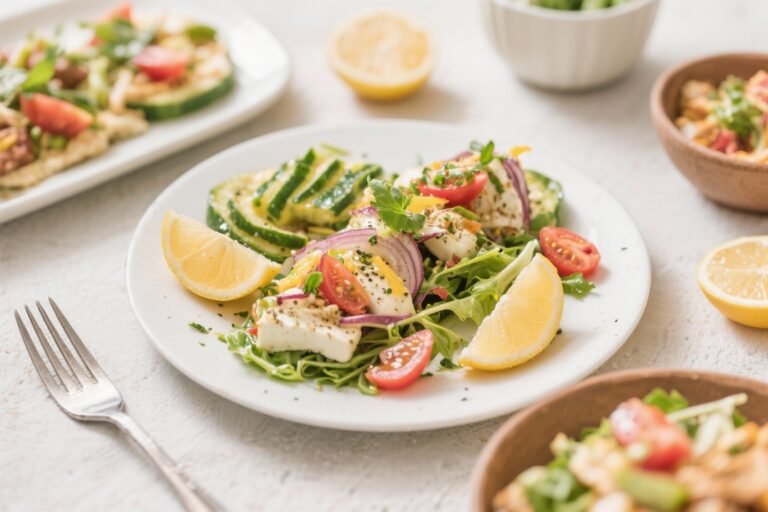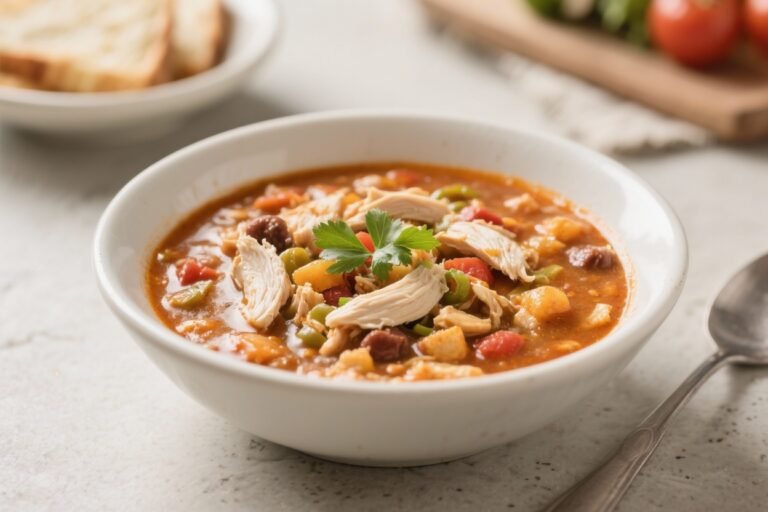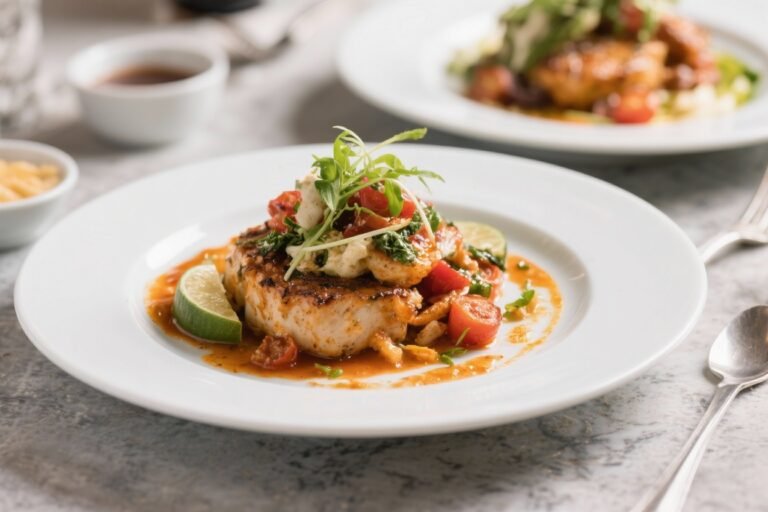Salmon Recipes That Slap: 1 Pan, 20 Minutes, Zero Regrets
You’re not tired—you’re under-salmoned. This is the weeknight move that looks fancy, tastes expensive, and takes less time than arguing about where to order takeout. We’re going for crispy-skinned, juicy-centered salmon with a punchy lemon-garlic butter, quick-roasted veggies, and a sauce that makes people think you “know flavors.” Spoiler: you do.
If you can season, sear, and squeeze a lemon, you can cook this better than most restaurants.
What Makes This Recipe Awesome
- Ridiculously fast: From fridge to table in about 20 minutes. Your future self says thanks.
- Restaurant texture, home effort: Golden-crisp skin, tender flaky interior. No complicated tricks, just technique.
- One pan = less mess: Sear the salmon, roast the veggies, finish with pan sauce.Done.
- Flexible AF: Swap the veg, tweak the herbs, use what’s in the fridge. It still wins.
- Nutritious without the lecture: Protein, omega-3s, fiber, and a sauce that feels indulgent.
What Goes Into This Recipe – Ingredients
- 4 salmon fillets (skin-on, 5–6 oz each), patted dry
- 1 lb baby potatoes, halved (or small waxy potatoes)
- 1 bunch asparagus, trimmed (or green beans/broccolini)
- 3 tbsp olive oil, divided
- 2 tbsp unsalted butter
- 3 garlic cloves, minced
- 1 lemon: zest and juice
- 1 tsp Dijon mustard
- 1 tsp honey or maple syrup
- 1 tsp smoked paprika
- 1/2 tsp crushed red pepper flakes (optional)
- Fresh herbs: 2 tbsp chopped dill and/or parsley
- Kosher salt and freshly ground black pepper
- Lemon wedges, for serving
Instructions
- Heat the oven: Preheat to 425°F (220°C). Place a large oven-safe skillet or sheet pan inside to preheat.Hot pan = crispy edges.
- Prep the veg: In a bowl, toss potatoes with 1 tbsp olive oil, salt, pepper, and half the smoked paprika. Carefully spread on the hot pan and roast 10 minutes.
- Season the salmon: Pat fillets very dry. Season both sides with salt, pepper, remaining smoked paprika, and lemon zest.Lightly oil the skin side.
- Add the greens: Toss asparagus with 1/2 tbsp oil, salt, and pepper. After potatoes have roasted 10 minutes, push them to one side and add asparagus to the pan. Roast 5 minutes more.
- Pan-sear the salmon: While veg roasts, heat a large skillet over medium-high.Add 1/2 tbsp olive oil. Lay salmon skin-side down and press gently with a spatula for 20–30 seconds to prevent curling. Sear 4–5 minutes until most of the sides turn opaque.
- Flip and finish: Flip salmon and cook 1–2 minutes more until medium (125–130°F) or to your preferred doneness.Remove to a plate, tent loosely with foil.
- Make the lemon-garlic butter: Lower heat to medium-low. Add butter to the same skillet. When foamy, add garlic and red pepper flakes; cook 30 seconds until fragrant.Stir in Dijon, honey, and lemon juice. Simmer 30–60 seconds to gloss up. Taste and adjust salt/acid.
- Bring it together: Pull veggies from the oven.Spoon some sauce over potatoes and asparagus; toss. Plate salmon over the veg. Spoon remaining sauce over fish.
Shower with chopped dill/parsley and extra lemon wedges. Hero shot time.
Storage Tips
- Fridge: Store salmon and veggies in airtight containers up to 3 days. Keep sauce separate if possible.
- Reheat: Low and slow to avoid dry fish—300°F oven for 8–10 minutes, or covered skillet over low heat with a splash of water.
- Freezer: Cooked salmon can freeze up to 2 months, but texture drops a bit.Avoid freezing the veggies; they go sad.
- Meal prep hack: Keep an extra batch of sauce in the fridge for 1 week. It rescues leftovers and your mood.
Benefits of This Recipe
- High-protein, heart-healthy: Salmon is rich in omega-3s (EPA/DHA) that support cardiovascular and brain health.
- Balanced plate in one go: Protein + complex carbs + fiber + healthy fats = steady energy, fewer snack attacks.
- Low cleanup: One roasting pan and one skillet. That’s it.Your sink rejoices.
- Scales easily: Cooking for two or ten? Double the veg, batch-sear the fish, and you’re still on schedule.
Common Mistakes to Avoid
- Wet fish = no sear: Moisture is the enemy of crisp skin. Pat dry thoroughly, then season.
- Overcooking: Salmon keeps cooking off heat.Pull at 125–130°F for medium. If you like it more done, go to 135°F—and stop.
- Cold pan syndrome: Searing in a lukewarm pan leads to pale, sad salmon. Preheat until shimmering.
- Skipping acid: Lemon isn’t optional—it brightens the richness.No lemon? Use vinegar (see Alternatives).
- Moving the fish too soon: Let the skin release naturally. If it sticks, give it another 30 seconds.Patience is flavor.
Alternatives
- No asparagus? Use green beans, broccolini, or zucchini. Thicker veg like carrots need extra time.
- No baby potatoes? Try sweet potatoes, cauliflower, or a quinoa/rice base. Adjust roasting time as needed.
- Dairy-free: Swap butter with olive oil or ghee (if tolerated).Add extra herbs for richness.
- No lemon: Use 1–2 tsp white wine vinegar or rice vinegar. A splash of dry white wine also works.
- Spice route: Trade smoked paprika for cajun seasoning, berbere, or garam masala. Match the sauce—think lime and cilantro for cajun, yogurt and mint for garam masala.
- Different cooking methods: Air fryer at 390°F for 8–10 minutes; broiler 6–8 inches from heat for 6–8 minutes; poach gently in seasoned broth for ultra-tender vibes.
FAQ
How do I know when salmon is done without a thermometer?
Gently press the top—if it flakes and separates easily but is still moist in the center, you’re there.
The sides will turn opaque most of the way up, with a hint of translucence in the middle. If it’s dry and chalky, you went too far (still edible, just grab extra sauce).
Can I use frozen salmon?
Yes. Thaw overnight in the fridge or under cold running water (still sealed).
Pat very dry before cooking. Frozen salmon can be a bit wetter, so sear slightly longer to crisp the skin.
Skin on or off?
Skin-on helps insulate the flesh and delivers that crispy, addictive texture. If you’re not into eating skin, cook with it on and remove after; it’ll peel off easily.
What if my pan isn’t oven-safe?
Sear the salmon in a regular skillet, then finish on the sheet pan with the veggies for 1–2 minutes if needed.
Or skip the oven finish and cover the skillet for 1 minute to gently steam to doneness.
Can I make the sauce ahead?
Absolutely. Make the lemon-garlic butter and store chilled up to 1 week. Warm gently before serving, adding a splash of water if it thickens too much.
How spicy is this?
Mild by default.
The crushed red pepper adds a small kick. Omit it if you’re spice-averse or double it if you enjoy a little drama.
What wine pairs best?
Crisp whites like Sauvignon Blanc, Albariño, or a dry Riesling. If you’re a red-only person, go light and chillable—Pinot Noir or Gamay.
IMO, bubbles always win.
Final Thoughts
This is the salmon play you’ll actually repeat: fast, flexible, and borderline addictive. The crispy skin and lemon-garlic butter taste like you spent an hour; the cleanup says otherwise. Keep a couple fillets in the freezer, a lemon in the crisper, and herbs on standby—you’re now five steps from a weeknight flex.
FYI, leftovers make an elite next-day lunch, and no, you don’t have to tell anyone how easy it was.

